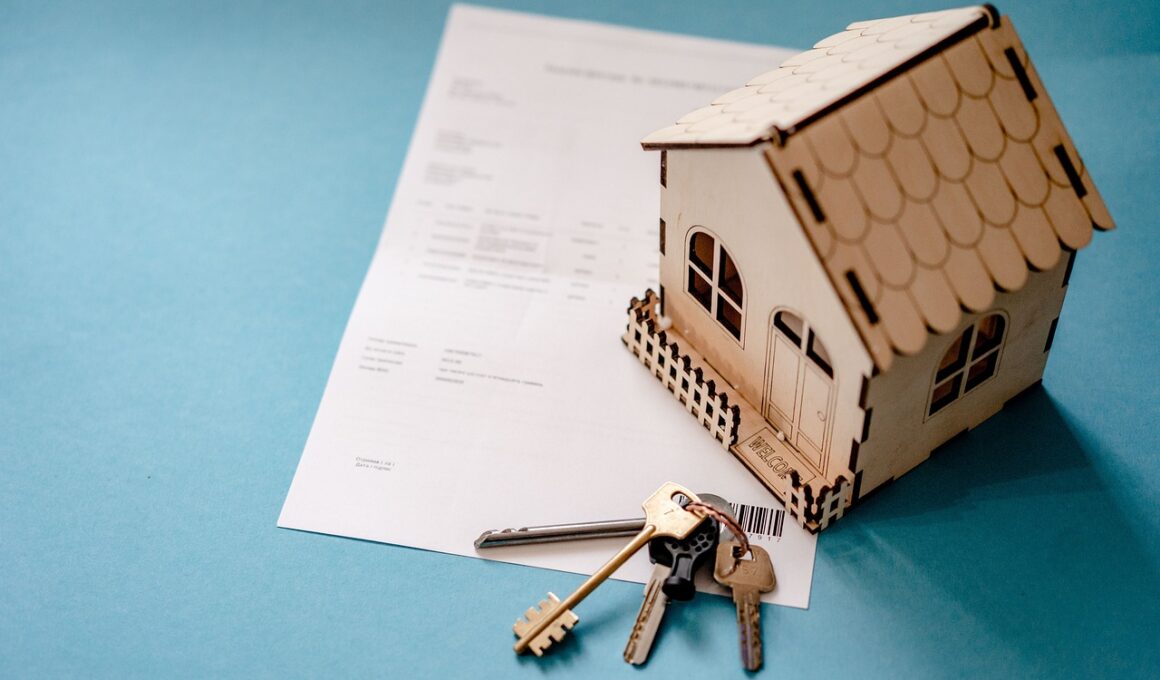How to Negotiate the Best Deals on Fix and Flip Properties
Navigating the world of fix and flip properties can be both lucrative and challenging. Understanding the negotiation process is essential for any investor looking to maximize returns on their investment. First and foremost, thorough research is crucial. Use online listings to gather information regarding property values, neighborhood trends, and the fix and flip potential of various houses. Consider attending open houses in person to get a firsthand look. When you start discussions with sellers, focus on building a rapport. Establishing trust can greatly enhance your negotiating power. Be prepared to articulate why you are an exceptional buyer—highlight your readiness to close the deal swiftly. In addition, you must know your limits; having a clear budget will guide your decisions. Furthermore, compare recent sales in the same area to assess property worth accurately. It may also benefit you to identify the seller’s motivation to sell, as this information can leverage your position in the negotiation to get the best possible price. Always be ready to walk away if the conditions do not meet your expectations, as this shows you are serious about making a responsible investment.
Before making any negotiation, it is essential to analyze the property’s condition and assess renovation costs. This analysis should include estimates from contractors or comparisons with similar projects you’ve managed. Always prioritize properties that might need repairs but hold significant potential for appreciation post-resale. This could mean targeting locations on the verge of gentrification. Additionally, be mindful of potential hidden costs. You should account for taxes, utilities, or other expenses you may not immediately consider when forming your initial budget. Leverage repair estimates to strengthen your negotiating stance; if the property’s condition dictates repairs exceeding the seller’s perceived value, utilize this information during negotiations. Offer a price point factoring these costs and demonstrate that you are aware of the market and local economic trends. Sellers often respect buyers with knowledge, helping you secure favor in negotiations. Look for deals that imply urgency, such as those advertised as ‘motivated sellers’ or ‘as-is’. These situations often result in better negotiating outcomes. Lastly, remain flexible with your terms and strategies; innovation can sometimes provide unexpected leverage.
Building a Solid Offer
Once you have established a negotiation plan, it’s time to construct your offer. Crafting a compelling offer may include the right mix of price and attractive terms. Ensure that your initial offer reflects the property’s condition, market trends, and your financial objectives. Do not be afraid to start below the asking price, as many negotiations begin with some back and forth. You should also consider contingencies based on the property’s condition and your findings. For instance, if inspections show hidden issues, you can re-negotiate based on your needs. Additionally, consider offering a quicker closing date, which can be appealing to many sellers. This tactic can sometimes outweigh the demand for a higher selling price, especially for sellers in a hurry to divest. Always communicate clearly with your seller. Explain your rationale for the offer you’re presenting, as transparency creates trust. Furthermore, be patient; effective negotiations often take time. This patience helps solidify your commitment to making a sound business deal. In essence, an optimal offer is more than just a number; it embodies the relationship you build throughout the interactions.
In the negotiation sphere, understanding strategies for counter-offers is essential. Being prepared for a counter-offer necessitates the buyer to anticipate the seller’s potential responses. Take the time to determine your maximum budget in advance, as this will prevent emotional decisions from warping your financial judgment. When facing a counter-offer, clarify your position and prepare to address gaps between your offer and theirs. You can reinforce the value of your proposal by reiterating aspects of the property requiring attention. Additionally, avoid being overly aggressive, as this can lead to a breakdown in communication. Instead, approach negotiations as a collaborative process. Keeping negotiations amicable allows for more favorable terms as both parties seek a win-win scenario. Empathy can go a long way; understanding the seller’s perspective is vital when advocating for your own position. If you reached an impasse, consider revising your terms or exploring alternative options. Presenting small changes can make a substantial difference in the terms achieved. Remember that negotiation is not merely about reaching the most favorable terms for yourself, but also about creating a deal where both parties feel valued and understood.
Financing Improvements in Negotiation
Securing a reliable source of financing is crucial in optimizing negotiations around fix and flip properties. Understanding the needs of both parties can enhance the way you present your financing options. Make sure to have your funds pre-approved; this gives sellers confidence in your ability to follow through with the deal. Knowing how you will finance the renovation can provide leverage. For instance, if you can negotiate favorable terms with a private lender or through alternative finance methods, disclose this as it could persuade a seller. Establish relationships with local lenders who understand the fix and flip market; they can provide valuable insights and flexible financing solutions. Consider offering a larger deposit if you’re confident in your negotiation skills. This approach not only proves your commitment but often leads sellers to be more flexible in other aspects of the deal. Remember, negotiation is an art—a transaction seldom fits perfectly into written terms, it’s important to be prepared to craft solutions that address everyone’s interests while moving the deal forward.
Closing the deal effectively is often overlooked but remains integral to a successful fix and flip strategy. Ensure that you’ve conducted a thorough due diligence review of all important documents before finalizing your agreement. This includes the title, inspections, and disclosures that might affect your investment. Invest time to scrutinize all the figures tied to the property. Additionally, consider hiring an attorney experienced in real estate transactions to navigate any complexities. Proper representation can mitigate risks and help clarify any unclear provisions. Ensure all obligations are transparent in the closing agreement. A robust contract with precise terms clarifies responsibilities for both sides and sets you up for a smoother renovation process. If renovations involve permits, make sure these are established and arranged prior to closing. Avoid any rushed decisions; these can lead to unexpected consequences post-purchase. The closing process provides an opportunity not just to finalize what you’ve agreed upon but also to re-confirm the relationship that you’ve cultivated with the seller throughout the negotiations. Efficiently managing this stage helps transition smoothly into the next phase of renovation and project execution.
Post-Negotiation Strategies
After negotiations conclude, the next focus should be on optimizing the renovation phase. Start by creating a detailed renovation plan outlining timelines and budgets for each task. Hire reliable contractors whose reputations ensure quality workmanship. Take the time to visit various sites of their past projects to substantiate their expertise. Stay actively involved throughout the renovation process; overseeing day-to-day activities assures the project remains aligned with your original vision. This proactive involvement allows for addressing issues before they escalate. Moreover, fostering an open line of communication with your contractors enhances productivity. Periodically review both progress and expenses to ensure adherence to the budget. Inspecting the work on an ongoing basis keeps everyone accountable and ensures standards are consistently met. Finally, document all improvements and timelines; this information will prove useful down the line when you decide to put the property back on the market. Understanding how your renovations add value becomes crucial in maximizing resale potential and profitability. In conclusion, effective negotiation strategies initially lay the groundwork for a successful fix and flip project, wrapping the entire process into a coherent and effective strategy for financial success.
To summarize, the negotiation process is an art requiring careful preparation, a thorough understanding of market dynamics, effective communication, and strategic adjustments. A well-crafted plan enables you to secure the best deals effortlessly, whether you’re evaluating prospective properties, presenting offers, or addressing counter-offers from sellers. Each step in the negotiation spectrum plays a vital role in how advantageous your final agreement becomes. Once a deal is executed, the focus pivots to the renovation phase, where having a dedicated strategy ensures the executed plan aligns seamlessly with your goals. Real estate investment, specifically through fix and flip strategies, can yield significant returns when approached with knowledge and care. By continuously researching, refining negotiation skills, and engaging in strategic planning, you position yourself as not just a buyer but a market participant contributing to the community’s growth and value enhancement. Keep building relationships and staying informed, and you’ll find that your negotiation skills continue improving over time. Ultimately, the dream of succeeding in real estate investments is achievable for those ready to put in the effort combined with astute negotiation techniques and sound planning.


